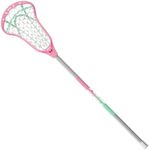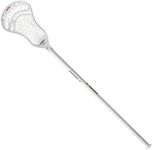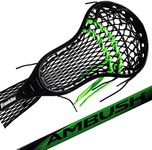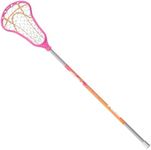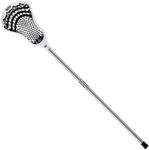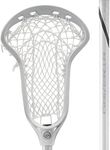Buying Guide for the Best Lacrosse Sticks
Choosing the right lacrosse stick is crucial for your performance and enjoyment of the game. The right stick can enhance your skills, improve your control, and make playing more enjoyable. When selecting a lacrosse stick, consider factors such as your position, skill level, and personal preferences. Understanding the key specifications will help you make an informed decision and find the best fit for you.PositionThe position you play in lacrosse greatly influences the type of stick you should choose. Attackers and midfielders typically use shorter sticks for better control and maneuverability, while defenders use longer sticks for increased reach and checking ability. Goalies have specialized sticks with larger heads to block shots. Knowing your position will help you select a stick that complements your role on the field.
Stick LengthStick length is an important factor that affects your reach and control. Attackers and midfielders usually use sticks that are 40-42 inches long, which allows for quick movements and precise ball handling. Defenders use longer sticks, typically 52-72 inches, to cover more ground and disrupt opponents. Goalies use sticks around 40-72 inches, depending on their preference for reach and control. Choose a length that suits your position and playing style.
Head ShapeThe shape of the lacrosse stick head can impact your playing style. A wider head provides a larger catching area, making it easier to catch passes, which is beneficial for beginners. A narrower head offers better ball control and accuracy, which is preferred by more advanced players. Consider your skill level and what you need most from your stick head when making your choice.
Pocket TypeThe pocket of a lacrosse stick affects how the ball is held and released. There are two main types: mesh and traditional. Mesh pockets are more common and easier to maintain, providing consistent performance. Traditional pockets, made of leather and nylon, offer more customization but require more upkeep. Beginners may prefer mesh pockets for their ease of use, while experienced players might opt for traditional pockets for a personalized feel.
MaterialLacrosse sticks are made from various materials, including aluminum, titanium, scandium, and composite. Aluminum sticks are lightweight and affordable, making them a good choice for beginners. Titanium and scandium sticks are stronger and more durable, suitable for intermediate to advanced players. Composite sticks offer a balance of strength and weight, providing good performance for all skill levels. Consider your experience and playing intensity when choosing the material.
GripThe grip of a lacrosse stick can affect your handling and comfort. Some sticks have a smooth grip, while others have textured or rubberized grips for better control. A good grip can help you maintain control of the stick during play, especially in wet conditions. Try different grips to see which one feels most comfortable and secure in your hands.
